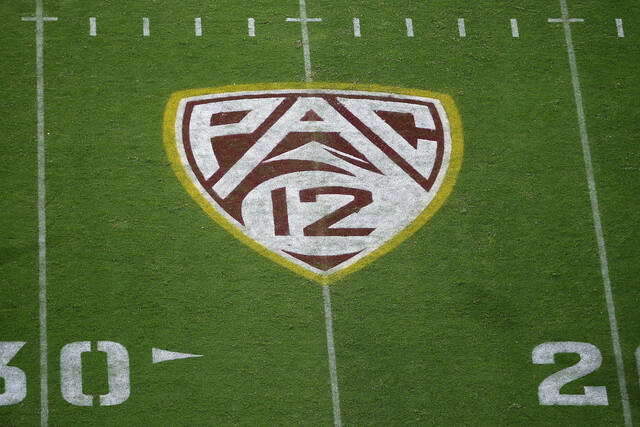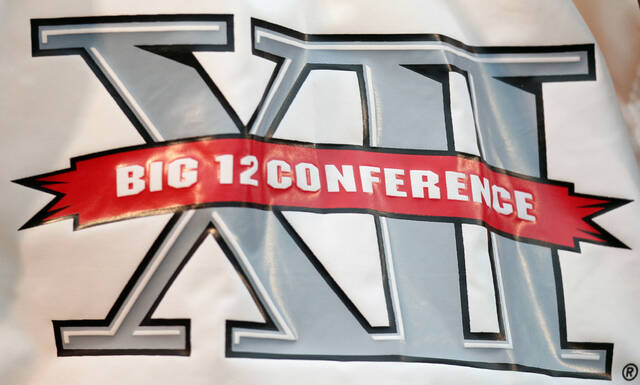Big Ten pulls Oregon, Washington from Pac-12; Big 12 adds Arizona, Arizona State, Utah
Dealing a combination of crushing blows to the Pac-12, the Big Ten announced Friday it will accept Oregon and Washington as new members next August.
Hours later, the Big 12 announced it is adding Arizona, Arizona State and Utah as members next year, completing its raid of the Pac-12.
The Big 12 has been targeting the Pac-12’s so-called Four Corner state schools for months, with Colorado making the jump last week.
The additions of the Arizona schools and Utah give the Big 12 16 schools, stretching from Florida to Arizona.
The Big Ten earlier in the day cleared the way for the Pacific Northwest rivals to join the league next year, and the Ducks were first to make it official with a brief video call that ended in a unanimous vote by its 13 trustees. The Big Ten a short time later said its presidents’ council had voted to accept the Ducks along with Washington.
The moves give the sprawling Big Ten 18 member schools, including four on the West Coast.
“Our student-athletes will participate at the highest level of collegiate athletic competition, and our alumni, friends, and fans will be able to carry the spirit of Oregon across the country,” Oregon president John Karl Scholz said.
The Pac-12 is down to four members: Stanford, California, Oregon State and Washington State.
The Big Ten’s latest grab from its Rose Bowl partner conference comes a little more than a year after it landed Southern Cal and UCLA. The Big Ten will be the largest conference in major college sports, spanning 15 states from New Jersey to Washington.
“The Big Ten is a thriving conference with strong athletic and academic traditions, and we are excited and confident about competing at the highest level on a national stage,” Washington president Ana Mari Cauce said.
Former Big Ten commissioner Kevin Warren had encouraged member schools to consider adding Oregon and Washington after the conference landed the two Los Angeles schools last summer, the blow that has sent the Pac-12 reeling for more than a year. Colorado will join the Big 12 in 2024.
It has all left the storied Conference of Champions that dates back more than a century on the brink of extinction.
Pac-12 leaders met early Friday to determine if its remaining schools, which at the time included Oregon and Washington, would accept the potential media rights deal with Apple that commissioner George Kliavkoff presented earlier this week.
Two people with knowledge of the discussion between the Big Ten and Oregon said the Ducks were leaning toward staying in the Pac-12 late Thursday, boosting the possibility others would stay put, too. Instead, Oregon officials notified the Pac-12 early Friday they were still uncomfortable with the Apple deal, and the school would be re-engaging with the Big Ten.
The Pac-12 and Kliavkoff have made no public statements since Colorado’s announcement last week that it was rejoining the Big 12.
“We are disappointed with the recent decisions by some of our Pac-12 peers,” Washington State president Kirk Schulz and athletic director Pat Chun said Friday before their Apple Cup rival announced it was leaving, “While we had hoped that our membership would remain together, this outcome was always a possibility, and we have been working diligently to determine what is next for Washington State athletics. We’ve prepared for numerous scenarios, including our current situation.”
Less than two weeks ago, Big Ten commissioner Tony Petitti said his presidents and chancellors wanted to him to focus on USC and UCLA’s transition to the Big Ten and not more expansion. Now, the Pac-12’s two biggest remaining brands and perennial football powers are heading for a new home.
Oregon and Washington will receive a reduced payout, Scholz confirmed, compared to current Big Ten members and to USC and UCLA, which are projected to receive more than $60 million each in media rights revenue from the league starting next year. A person familiar with the negotiations said the Ducks and Huskies would receive about $30 million per year for their first six years in the conference, with annual escalators and the ability to draw on future payments.
Washington was a charter member of the Pacific Coast Conference in 1916, the organization that eventually became the Pac-8, then 10, then 12. Oregon joined what was then the Athletic Association of Western Universities in 1964. USC’s history in the league dates to 1922, UCLA’s to 1928.
While the USC and UCLA decisions to leave started the Pac-12’s demise, last fall’s move by the Big 12 to get an early extension of its media rights deals with ESPN and Fox was key.
That left a thin market for Kliavkoff and the Pac-12, which ended up with the streaming-heavy proposal with Apple that would have left its schools lagging behind other Power Five conferences in revenue.
Remove the ads from your TribLIVE reading experience but still support the journalists who create the content with TribLIVE Ad-Free.


